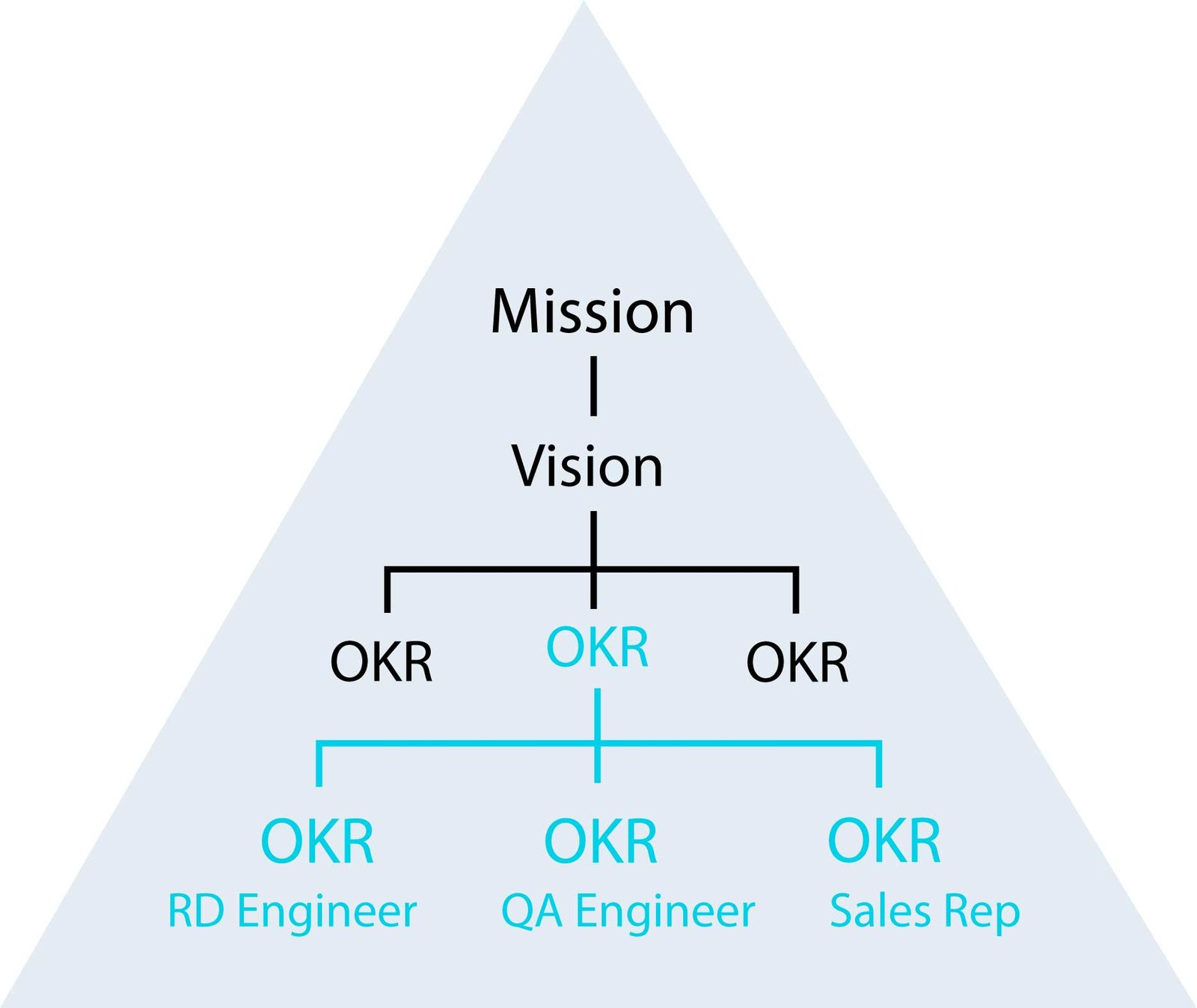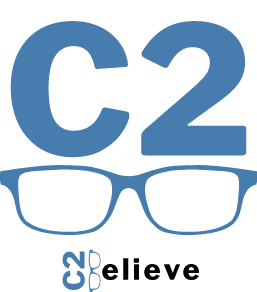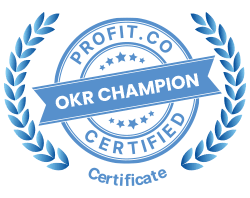🎧⠀Listen and follow
Introduction:
Hybrid OKRs : Let OKRs Adapt to You
Implementing OKRs into Traditional Tech Companies
Goal-oriented frameworks like OKR can offer many management advantages for tech companies in Taiwan. However, most of these companies follow a top-down management style rooted in manufacturing paradigms. Trying to implement a collaborative or bottom-up style can seem like an awkward fit.
The good news: You can still implement OKR successfully and achieve strong results if you adapt a hybrid strategy to fit the culture with a simplified approach to training and coaching. In this article, I’ll show you how we do it.
Explore “What is OKR”
Keep OKRs Simple: Focus on What Matters Most
Companies often struggle to implement the OKR framework properly. Books, certification courses, and nuances can make OKRs feel intimidating, and engineering-minded CEOs may find the concepts hard to grasp.
Early in the process, I make it a point to emphasize the key points about OKRs, which are the facts, F.A.C.T.S.

Find out more “Why companies struggle with OKR implementation”
Introducing the F.A.C.T.S.
I start by emphasizing the that statement “OKR is a goal-oriented framework”. When we set goals, we have a clear understanding of what needs to get done and when. That’s the first principle in a five-letter acronym that highlights OKR’s core advantages: F.A.C.T.S.
- Focus on important goals
- Align your Objective to company mission, vision, and strategies
- Commit to completing your Objective by a set date
- Track your progress for all to see
- Stretch for the stars
You should instill this framework early and repeat it often, almost like a mantra. The key is to establish OKR culture in a way that’s easy to communicate.
See here “OKR Superpowers F.A.C.T.S”
The Importance of a Goal-Oriented Framework
It’s important to stress how a goal-oriented management culture dissolves the barriers in top-down styles of management, something we call the “silo effect”.
With OKR, you set your goal and disparate individuals from different teams come together to solve problems – this is call cross-functional collaboration. The focus becomes OKR wins, not departmental wins.

OKR is a hierarchy of goals, not authority.
Learn more about Silos: “OKR vs Departmental Conflict”
Bend the Rules: Adapting Objectives and Key Results for practical usage.
The OKR directives often feel top-down, vague and too nuanced. Staff often are anxious about Objectives that are overly ambitious, while Key Results often turn into task lists.
OKRs were designed with good intentions, but demanding adherence to the rules repeatedly can wear down both coaches and staff. OKRs are bendable, and how much you bend depends on your situation.
At the executive level, I stick to the original OKR rules: keep Objectives aspirational and Key Results quantitative. But as I move down the hierarchy, I allow Objectives to become more realistic and Key Results to start resembling tasks.
This approach creates a smoother transition from strategic planning to project execution while still maintaining the tenets of OKRs. We’ve seen it work well for departments like Sales, Quality Control and Operations. And regardless of what the OKR rulebook says, this method works.
The key takeaway? You can bend OKRs as long as you stay true to the F.A.C.T.S.
Trackability Matters: How to Monitor Progress Even with Task-Based KRs.
So how do you track progress when Key Results look like tasks? Assign due dates and treat them as milestones. As each milestone gets completed, you check them off showing the incremental progress.
But what if a task takes three months to finish? Break it down into subtasks. In my work, I break down any task that takes more than a week. Honestly, that’s just basic planning strategy.
Once you’ve made progress visible, the next challenge is ensuring that every Objective connects to a meaningful purpose.
Alignment Made Easy: Use the word “To”, for Purpose-Driven Objectives
When you create an Objective, make sure it aligns with a higher purpose—whether that’s a top-level OKR, your company’s mission, vision, or strategy.
When staff write their own OKRs, alignment isn’t always obvious. In those cases, I suggest adding the word “to” in the Objective.
For example, the company’s Mission is “Become the Authority in the industry, ” and a staff member has proposed this OKR:
- “Become the digital marketing expert in the company, ”
I advise them to revise it as:
- “Become the digital marketing expert in the company to help market our company as the Authority in our industry. ”
This small change helps staff stay engaged with the bigger picture and keeps the company aligned.
The key takeaway? OKRs must always align with a higher purpose .
See here “What is OKR vs Project Management“
OKR Tools Make OKRs Easier
Staff tend to embrace OKRs more readily when they use specialized software.
Centralized OKR platforms make it easier to manage OKRs across teams. Everyone can review their assignments and progress online. Managers can check the same data anytime, without having to call a meeting. This transparency encourages accountability.
The key takeaway? Staff commit when their work and progress appear in a public forum.
Don’t Mandate Company-Wide OKRs – Grow Them.
Some companies mandate OKRs across the board and face resistance to a top-down directive. Managers push back. Staff sandbag their efforts. The initiative loses credibility.
Instead, I start with one or two pilot teams and demonstrate how OKRs drive results. Once other teams see the progress, they feel the importance of joining in – it’s an organic way to grow OKR culture into your company without the friction.
Learn more “How to implement OKRs“
Integrating Familiar Frameworks
KPI – Easily integrated into OKRs.
KPIs are commonly used in Taiwan. They are metrics used to gauge company health or project future goals. That said, KPIs fit seamlessly into the OKR framework, which is also goal-oriented and quantitative in nature.
SWOT. Strengths, Weaknesses, Opportunities, Threats
Most Taiwanese companies already know SWOT, so it’s easy to integrate it into the OKR process. You can even use SWOT insights to define Key Results.
For example, if your Objective is “Increase Sales in the APAC region, ” and you identify a weakness—“We don’t have enough distributors in Thailand” – you can write a Key Result:
- “Find two new distributors in the Thailand region. ”
If you spot a threat—“X-Y-Z competitor is advancing in APAC” – you can write:
- “Create better website pages to outperform X-Y-Z. ”
While SWOT helps identify tactical gaps, the Balanced Scorecard offers a broader strategic lens – especially useful when tying OKRs to financial impact.
Balanced Scorecard – Four Strategic Areas
Of course, CEOs will focus on revenue, but OKRs don’t directly address financial impact, but the Balanced Scorecard (BSC) can help.
Although BSC isn’t widely used in Taiwan, it offers strategic considerations in four areas that can complement OKRs:
- Financial (profitability, shareholder value)
- Customer (satisfaction, market position)
- Internal Processes (operations, QA, product development)
- Learning and Growth (employee development, innovation)
If you have an OKR in place, run through the BSC categories to generate relevant OKRs, similar to the SWOT example.
OKR with Hardware/Software Management: Bridging Strategy and Execution
In tech companies, project managers often follow Agile, Waterfall, or hybrid methods. OKRs don’t interfere with these styles, but they can provide strategic direction.
In Taiwan, I’ve seen teams rely on manual coordination, frequent meetings, and sprawling spreadsheets. This leads to delays, frequent changes to specs, and cross-departmental friction.
These teams can still take advantage of OKR ideologies applying the F.A.C.T.S principles, they reduce ambiguity and align around shared goals. Even if OKRs aren’t embedded in every sprint, they act as a compass—ensuring that execution ladders up to meaningful outcomes.
See here “What is OKR vs Project Management“
Conclusion: Let OKRs Adapt to You – Hybrid OKRs
Implementing OKRs in traditional tech cultures isn’t about forcing a Silicon Valley playbook onto a different business DNA. It’s about adapting, simplifying, and respecting the culture.
By bending the rules where it makes sense, integrating familiar frameworks like SWOT, and starting small with pilot teams, you can build an OKR culture that works.
The F.A.C.T.S. framework makes OKRs easier to understand, easier to track, and easier to believe in. And when staff see their goals clearly, aligned with purpose, and stretched toward impact—real transformation begins.

OKR Training Classes in Taiwan
C2believe provides OKR training with classtime, exercises, and coaching.
On Site or Off Site | English or Chinese | In Taiwan (or remote)
- Introduction to OKR for leadership (2 hours)
- Team OKR Class (18 hours) – Classtime, exercises and coaching
- 8-month OKR deployment (coaching and train the trainers)
Contact us about your OKR training needs here










0 Comments